Gigabyte GA-Z77X-UD5H Review: Functionality meets Competitive Pricing
by Ian Cutress on July 25, 2012 5:00 AM EST- Posted in
- Motherboards
- Gigabyte
- Z77
Gigabyte GA-Z77X-UD5H Software
Gigabyte motherboard software has been stagnant for a couple of generations now - nothing new to the plate, and the same interfaces greet us every installation. The only item that ever changes is the stability, and the ability of these programs to work with new chipsets. Alas, that remains true of the Z77X-UD5H.
The default CD installer gives the user the one-click option to install all drivers, and offers users to install relevant software as well. There is one drawback here - some of the more esoteric software (3D Power, @BIOS) is not installed. These have to be installed one-by-one manually by navigating through. However, a user may not ever notice this software, as after installation and reboot, the CD installer does not re-emerge. Odd.
EasyTune6
The main heart of Gigabyte's software package, as it has been for a while, is EasyTune6. This sort-of centralized bit of software allows users to adjust many of the CPU BIOS settings from software, as well as examine their system and adjust fan controls.
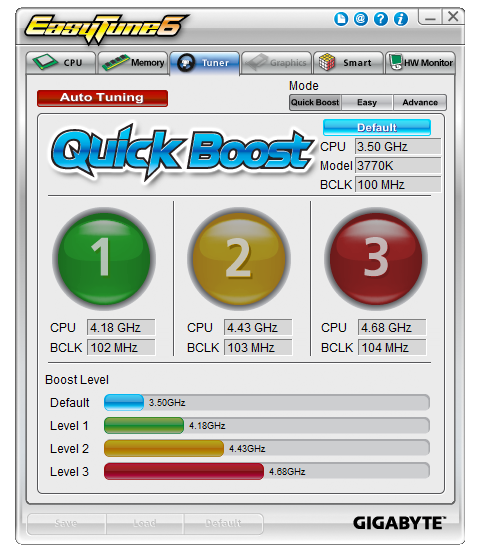
The first screen offers the user a series of pre-determined overclocks, hard written into the program. Our successes with these are varied, as will be explained in the overclocking section. The "Auto Tuning" option in red has nothing to do with adjusting sound (a la AutoTune), but attempts to manually increase the CPU speed according to temperature sensors and stress testing. Again, our experiences with this are detailed in the overclock section. Users can navigate to the 'Easy' and 'Advanced' sections for more detailed and specific options relating to speeds and voltages.
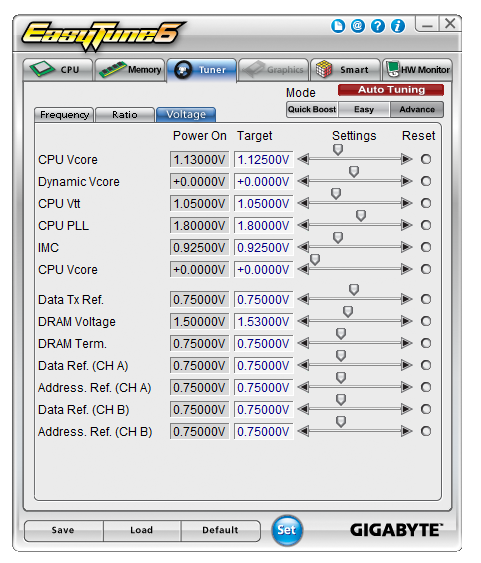
Aside from the monitoring software, EasyTune6 also allows for fan manipulation under the "Smart" tab:

These are very basic fan controls, with a very basic graphical representation. On the Z77X-UD5H, the CPU fan and the SYS fans can be controlled in groups. This means that the SYS fans are all controlled at the same time. When put head-to-head against the best motherboard fan controls available on the market, the Gigabyte board loses out big time.
EasyTune6 also has one big flaw, which has sprung up in my testing several times over the past year. Any software that includes monitoring tools has a large effect on how the CPU processes Deferred Procedure Calls (DPC). These calls are queued in line with priority - IO gets given a priority, monitoring gets given a priority, audio gets a priority. The issue comes with comparing the DPC Latency when these monitoring tools are active. In the BIOS, the monitoring tools are given high priority at the expense of everything else, causing a 20x increase in the latency of other signals, for example audio. This means that during monitoring, the audio could have a large (>3ms) direct latency between production and output. This is severely detrimental to audio fans and producers - in order to get rid of this delay, the monitoring software must be switched off. I have seen this effect with other manufacturers, not just Gigabyte, and their solution was a new BIOS which gives the monitoring tools a lower priority in the DPC process, which fixed the problem and allowed users to run the monitoring tools with no direct effect on DPC. This has been forwarded to Gigabyte, so audio enthusiasts may want to update beyond the F8 BIOS should you purchase this board.
Windows Gadgets
Along with the default install, Gigabyte decided to put two icons on the screen to install two Windows Gadgets. The first of these is for EAX Advanced HD 5.0, which rather than actually doing anything just provides some PR regarding the fact that the Z77X-UD5H confirms to the EAX 5.0 standards. The other gadget is a little more useful, being a SoundBlaster media player. This can be synchronized to a folder of choice and involves simple navigation tools.
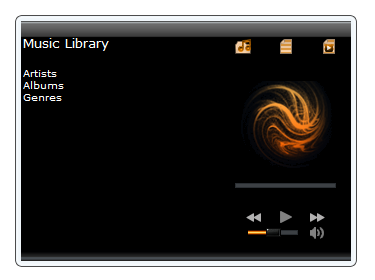
@BIOS
Gigabyte's BIOS updating tool, @BIOS, also makes an appearance. Should Gigabyte decide to perform a major BIOS update, major enough that the Q-Flash utility in the BIOS not recognize the BIOS as being for the motherboard, then users will have to resort to @BIOS. It also acts as a useful tool to check that your system is as up-to-date regarding BIOS releases.
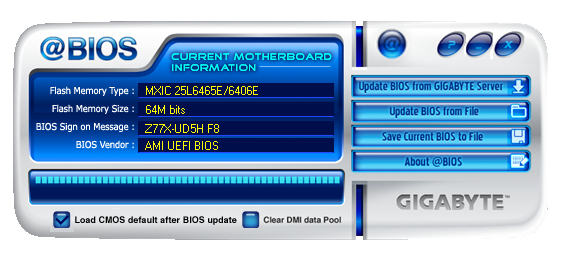
It is simple and easy to use - I have had to use it on occasion.
3D Power
The oddball in Gigabyte's arsenal of software is 3D Power. We were introduced to this utility while the 3D BIOS was still in its infancy, when 3D Power was confusing and slow. While the 3D BIOS has been updated significantly to be fast and accurate, the 3D Power software is left lagging behind, as if it was designed as part of a student's flash project.
Along with being slow and rough around the edges, 3D Power gives users the option to configure the power delivery of the motherboard. This brings up two issues - the first being that most users or enthusiasts will not be adjusting the power delivery options; and the second issue is that if an enthusiast wants to change the options, they would do so in the BIOS and not through a software utility, especially one that is slow and rough. As part of the software package, 3D Power needs a lot of work to be at least visually appealing.


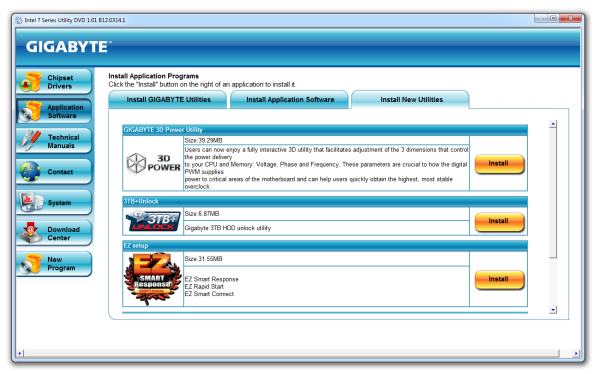
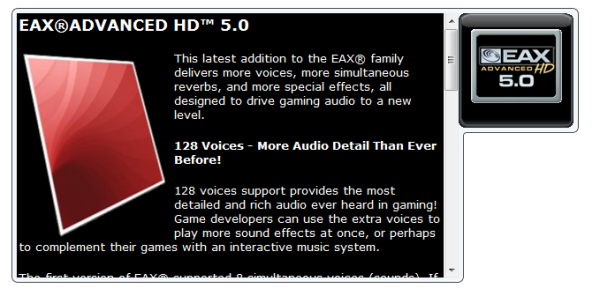
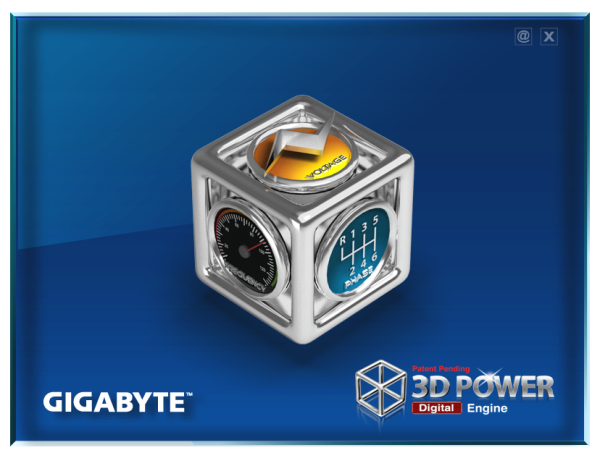














70 Comments
View All Comments
Belard - Thursday, July 26, 2012 - link
Its in the BIOS POWER settings. I've been building some systems with its smaller sister boards. You can go to gigabyte, track down the manual and look it up... it should be there. Also, it gives you the option to power up with a mouse.Even a wireless USB keyboard manage to power up the system (cool).
shin0bi272 - Wednesday, July 25, 2012 - link
I know intel is capable of doing on chip video and there have been boards with onboard video for forever but the trend of putting 9001 video ports on the back of the thing instead of oh say 1 is disturbing.Lets be honest if youre a gamer and you want 3 way SLI you dont need onboard video. Likewise if youre not a gamer and you want to plug your monitor into the motherboard you dont need 3way pci-e 3.0 sli. Pick one and go with it!
Plus if you wanted to you could include a couple of adapters to go from dvi to vga or dvi to hdmi and have 1 plug on the board itself which will save space on the back i/o panel and allow for more important things like more esata or usb3.0 or even that wifi that the review alluded to.
This is a case of a motherboard manufacturer trying to please everyone with 1 board instead of making a gamer board and a HTPC board and a file server board. Saves them money but screws the consumer.
shin0bi272 - Wednesday, July 25, 2012 - link
oh and if usb 3.0 is backwards compatible with 2.0 ... why include 2.0 at all?Dustin Sklavos - Wednesday, July 25, 2012 - link
USB 3.0 support is still a little bit hinky; a fresh install of Windows 7 may not recognize your keyboard if it's plugged into a USB 3.0 port without drivers.And uh...I use two of the display outputs on the back of my motherboard. Multi-monitor isn't that uncommon these days.
IanCutress - Wednesday, July 25, 2012 - link
Each USB 3.0 controller has an associated Bill of Materials cost. You only get 4 USB 3.0 from the chipset, but 12 USB 2.0. USB 3.0 as Dustin says is a bit flaky at times - technically the Intel USB 3.0 should work at boot but they do not always, depends on how the motherboard traces are routed.Regarding boards and video outputs. If the CPU has the capability to, motherboard manufacturers get slammed if they don't include at least one or two video outputs just in case a user wants them. Imagine I had this board and strapped in a few NVIDIA GPUs for CUDA programming. If I could, I'd use the onboard IGP for my display, then have the GPUs purely for computational needs, and still have all the PCIe 3.0 bandwidth I would need.
Ian
Grok42 - Wednesday, July 25, 2012 - link
I don't think I've ever agreed and disagreed with a post so much before.I think it is about time that motherboards ship with the ability to run multi-monitor setups out of the box. Hopefully all four can drive a monitor at once! What is crazy is that they are shipping with 3-4 DIFFERENT connectors! I think all graphics connectors are completely terrible. Not one of them could drive an iPad3 screen even if the DVI was dual-link. This is why Apple is moving to thunderbolt I think but it still isn't clear to me that a Thunderbolt port could drive a hi-res display like an iPad. The next connector should have the ability to drive an 16k display so we can live with one connector for a decade. Monitors last 2x-4x the lifespan of a computer. Build a connector that will last!
Of all the things we need more of, USB isn't one of them. At work we drive 24-48 USB devices on standard low end dell computers. Most DIY motherboards like this support at least 6 and more typically 10. If you need more than that a simple hub which you already have in your monitor/keyboard/mouse/toaster will give you all you need.
Now the part I think you're spot on is that they are trying to please everyone with one board. I would expand this to the entire industry. If you've seen any of my screeds about computer cases you know that there is really one one type of case for sale, the one that sorta works for everyone but isn't great for anyone. The MB market is better but still a mess. Right now they have lines that are broken into feature grades with each higher level board simply adding more stuff. Instead they should be aimed at what consumers want to build.
If you are making a highly overclockable board with support for 3 PCI-E graphics boards do you really need/want 10 SATA ports? Who is overclocking their file server and run an SLI console? The problem is if you back off to a lower grade board you lose something you do need so your file server has SLI support even if you don't want it.
epobirs - Thursday, July 26, 2012 - link
You are completely wrong. The iPad3 display is merely 2048x1536. Not a big deal for dual link DVI which has been used to drive 2560x1600 displays for many years before the 'Retina' designation came out of Apple's marketing department. The idea that the iPad3 display is somehow the bleeding edge of screen tech is laughter inducing. The only thing remarkable about is the small size. Such resolutions are old news for large displays, especially in the professional markets. Keep in mind, the Retina designation is about pixel density, not just resolution.The only port on that panel that cannot drive a Retina display without breaking a sweat is the legacy VGA. DVI is showing its age but we have two successors already in HDMI and Display Port. Both of those are capable of driving 4K displays that won't be common in the consumer sector for several years. More importantly, the on-board GPU tops out at 4K, so equipping the board to drive anything greater is an utter waste.
The newer ports are already designed with monitors most people won't be able to consider buying for a very long time. Nor do today's displays have the same longevity as CRTs did. Fortunately, they compensate by rapidly improving in bang for the buck. When my $300 1680x1050 22" monitor, which seemed an amazing bargain when first purchased, died after a bit over three years, I replaced it with a 27" 1080p screen for around $250. On another desk I put in an ACER 32" HDTV as the monitor for $250, just because I could. (I remember paying close to $1,000 for my first 17" CRT that weighed close to 80 pounds.)
Trying to design for what will be called for a decade from now is just a waste of time. Extremely few consumers will benefit and there is a good chance NOBODY will benefit because something came along that changed things so much as to render your long term plan badly obsolete. The payoff just isn't there. VGA has been around since 1987 but there aren't any displays from that era or ten years later that are worth the trouble to use today.
I'm reminded of back in 1999 when A certain type of Apple snob loved to go about how the original 128K Mac had no Y2K issues. Who cares? If you were still relying on an 80s Mac in 1999 your life would have to be so miserable as to make Y2K terribly low on your list of troubles.
As for USB and SATA ports, in a full sized ATX board I'd far rather have ports going unused than have to add more later. If I want minimalist I'll build with a smaller board and case. They each have their place.
aaronb1138 - Wednesday, September 5, 2012 - link
Even VGA can drive up to around 2560x1600 @ 60 Hz, but cable quality and length becomes a factor (you need a $15-30 shielded cable instead of a $5 one). I run a Sony FW900 at 2048x1280 @ 85 Hz over VGA cleanly (BNC or VGA connectors, both are equal with good cables).Dual link DVI can run 2560x1600 @ 60 Hz at 10 bits per color (30 bit color).
Belard - Thursday, July 26, 2012 - link
This is not a true 3X SLI board. It has the slots, but not the lanes to do full blown 16x16x6 or even 8x8x8. At $140~170, its a upper mid-range board.I build system with Gigabtye mATX boards... it'll support 8x8 SLI or two Cross-fire boards, it also has 3 16x slots. Not bad for $80 (Microcenter discounts).
So having the various types of video ports is very good for typical people who only use a single monitor. With the 4 types, everyone is covered. For a dual monitor with DVI inputs, I used a DVI-DVI cable and spent $15 for a HDMI>DVI cable... not a big deal.
Even $400 video cards will require adapter cables to use in multi-monitor setups.
rickon66 - Wednesday, July 25, 2012 - link
I still think that this board has great bang for the buck, especially since itis often available for $139.99 at Micro Center.